Global Flyer Virgin Atlantic Model
Production Time 9 to 10 weeks
Shipment is by FedEx, UPS or DHL International Express Courier with a normal door-to-door delivery time worldwide of within 2-3 business days after dispatch. Due to the current volatility of world fuel prices, the amount mentioned here is our best estimate for DHL and UPS and may be subject to change at the time of shipping.

Product statistics
Length: 6.6 Inches (16.8 Centimeters)Wingspan: 17.1 Inches (43.4 Centimeters)
Height: 2 Inches (5.1 Centimeters)
Scale: 1:80
$259.50
Manufacturer: Virgin
Production Time 9 to 10 weeks
-
United States dollar ($)
-
Pound sterling (£)
-
Euro (€)
-
Australian dollar ($)
-
Canadian dollar ($)
-
Singapore dollar ($)
-
Swiss franc (CHF)
-
Japanese yen (¥)
-
Danish krone (kr.)
-
Hong Kong dollar ($)
-
Norwegian krone (kr)
-
Swedish krona (kr)
General Product Description
Our ReplicaHangar Global Flyer Virgin Atlantic Model exhibits unique, unrivaled quality and detailed design to come as close as possible to the accuracy of the actual plane. It comes as standard with a robust, durable base or stand which is available in a variety of different finishes designed to match your own personal requirements including solid wood, wood with polished metal supports or adjustable wood wall mount and will be ready within about 9-10 weeks from placement of order.
The Global Flyer Virgin Atlantic Model is made of the finest kiln dried renewable mahogany wood (commonly known as Lauan or Meranti) which has undergone many stages of carving and meticulous and careful sanding giving the beautiful, finished museum quality masterpiece. Many collectors and model connoisseurs demonstrate their preference for genuine handmade and hand painted mahogany wood models rather than plastic or die cast (diecast) alternatives due to the overall look and totally different feel of the item - we trust you will find the same. We can however, if required produce the same model in Solid Cast Resin so just click and contact us for further information. Our craftsmen and gifted artisans ensure that our finely handcrafted model air and spacecraft match the precise blueprint details of the original version. The paint scheme, markings and parts are closely matched, reflecting the original craft. This stylish top-quality desktop replica model will surely enthrall anyone who receives this as a gift and for sure one of the most appropriate and desirably collectable gifts for every Space or Science Fiction enthusiast and avid Spaceship or Scifi collector whilst also displaying a perfect resemblance to the actual Global Flyer Virgin Atlantic Model.
If you require, we can also make the Global Flyer Virgin Atlantic Model in any other markings, livery or colour scheme you require and if necessary, in a different size or scale. Just click here to contact us with a description or photographs of what you require, and we will let you have a quotation for the necessary customization by return email. We can also make bespoke scale replicas of any other private / civil commercial airliner or airliners, helicopter, glider, gliders with engines, military jet, warplane jets, propeller warplanes, biplane, triplane, tail fin, spacecraft, rocket or NASA model you require in any airline, military or civilian livery or colors. We also produce Gerry Anderson models, model airship, blimp, dirigible, blimps, boat, and ship collectibles. Wall plaque or seal for military, government or private customers. Wall plaque or seal for military, government or private customers. Again, by clicking here to contact us just let us know exactly what you need.
The Scaled Composites Model 311 Virgin Atlantic GlobalFlyer (N277SF) is an aircraft designed by Burt Rutan which Steve Fossett flew in a non-stop solo trip around the world from February 28, 2005 until March 3, 2005. The feat matched the distance set by the previous Rutan-designed Voyager aircraft and set several world records for being the fastest non-stop, unrefuelled circumnavigation. The attempt was described as the last great aviation record attempt, and was the first time a solo, non-stop, jet-powered and unrefuelled circumnavigation had been successful.
The aircraft was financed by Richard Bransons airline, Virgin Atlantic, and built by Burt Rutans company, Scaled Composites. The companies had previously announced a combined effort for Virgin Galactic.
Between February 7, 2006euro; scaron; scaron; scaron; February 11, 2006, Fossett and GlobalFlyer set a record for the longest flight in history: 26,389.3 miles (42,469.46 km).
The GlobalFlyer is the first jet aircraft designed for an uninterrupted circumnavigation of the globe and unusually, has just a single jet engine.
Physically, the GlobalFlyer aircraft resembles an enlarged, slender P-38 Lightning, with twin tail booms mounted outboard of a smaller, central nacelle. The pressurised cockpit is mounted on the leading edge of the center pod and provides seven feet of space in which the pilot sits. Unlike the P-38, or similar twin-tail designs, the solitary turbofan engine is mounted atop the manned central fuselage, several feet behind the cockpit. The outboard tail booms instead contain fuel, and end in control surfaces which are not cross-connected.
The aircraft is constructed of carbon fiber reinforced epoxy, the main structural member being a slender single piece 37 m wing. The wings are made of sturdy composite materials with the skin of the aircraft being a graphite/epoxy and Aramid honeycomb. The use of lightweight materials permits the fuel to comprise 82% of the take-off weight: an unusually high ratio in the aviation world.
The aircrafts aerodynamic design is such that, during the descent phase, tail parachutes must introduce sufficient drag to allow for a safe landing speed.
The Voyager aircraft suffered from design flaws that made it warp in shape very easily, so the GlobalFlyer is designed to have greater stiffness. It is also designed to fly much faster than the Voyager, mainly due to the endurance constraint dictated by the choice of a solo pilot; as a consequence, the Voyagers propeller system was replaced with a turbofan powerplant.
The GlobalFlyer is designed to operate at high altitudes, where the air is colder. Despite this, external heaters were not included in the design. As a consequence of this, there was some concern that, if the aircraft was to use standard jet fuel, the fuel might freeze. Therefore, the GlobalFlyers engine, a Williams International FJ44-3 ATW turbofan, which would normally take Jet-A fuel, was modified to burn lower-freezing JP-4 fuel, which is a 50-50 mix of kerosene and gasoline.The round-the-world attempt was scheduled for early January 2005 after 27 testflights not fully fueled, from the 12,300 ft (3,750 m) runway of the municipal airport in Salina, Kansas. However, a late problem with delivering the aircraft to Salina meant that the attempt was pushed back to 28 February 2005.
Mission Control was at the adjacent Salina campus of Kansas State University, and proved to be an extremely high-tech affair.
A tail wind was essential to making the 36,787.559 km (22,858.755 miles) that it needed to fly in order to meet the FAIs definition of circumnavigation, the length of the Tropic of Cancer. This meant that the last few hundred miles would be fairly tense, as by that point the aircraft would be nearly out of fuel. As it turned out, GlobalFlyers fuel sensors indicated that the plane had possibly lost about 1,200 kg (2,600 lb) of fuel early in the flight. This forced Fossett and Mission Control to decide whether to abort the flight as it reached the Pacific Ocean near Japan. Fossett chose to delay the final decision until he reached Hawaii; by that time, favorable winds encouraged the mission team to go ahead and attempt to complete the circumnavigation.
Virgin Atlantic GlobalFlyer landed at Salina at 19:50 UTC (13:50 CST) on 3 March 2005, having completed its circumnavigation in 2 days 19 hours 1 minute 46 seconds. The distance flown was determined to be 36,817 km, only about 30 km above the minimum distance required.
Note: Since 1986, the FAI has changed the geometric requirements for circumnavigation of the world. In 1986 the Voyager was required to pass the equator, flying in both the northern and the southern hemisphere. This criterion no longer applies, allowing the pilot more flexibility in seeking tailwinds.
On Thursday, December 23, 2005, Steve Fossett announced plans to perform a second circumnavigation in the GlobalFlyer, this time taking off from the Kennedy Space Center in Florida, flying eastbound and landing at Kent International Airport in Kent, England.
The flight was known as The Ultimate Flight and intended to set the absolute record for the furthest flight distance ever.
On Wednesday, February 8, 2006, at 12:22 (UTC), GlobalFlyer took off and flew eastbound from Kennedy Space Center, and landed after a flight duration of 76 hours 45 minutes having travelled 26,389.3 miles (42,469.46 km).
GlobalFlyer at the Kennedy Space CenterThis distance set a new record for the longest ever aircraft flight in history, breaking the old records of 24,987 miles in an airplane and 25,361 miles in a balloon. The landing was made at Bournemouth Airport, Fossett having declared an emergency and diverting because of a generator failure at 40,000 feet. Generator failure meant that he had about 25 minutes until his batteries were exhausted, when he would have lost all electrical power. To add to the drama, two tires burst during the landing and the fuel remaining was found only to be 200lbs.
Aside from that, there were some relatively minor pieces of damage, such as a broken aileron hinge and a jammed intake valve, but otherwise the aircraft survived remarkably intact
| Weight | 6 kg |
|---|---|
| Dimensions | 6.6 × 17.1 × 2 in |
Be the first to review “Global Flyer Virgin Atlantic Model” Cancel reply
Related products
Space, NASA & Experimental
Space, NASA & Experimental
Arcadia Space Battleship Ship Captain Harlock Tochiro Oyama Model
Space, NASA & Experimental
Space, NASA & Experimental
Space, NASA & Experimental
Space, NASA & Experimental
Space, NASA & Experimental
Space, NASA & Experimental

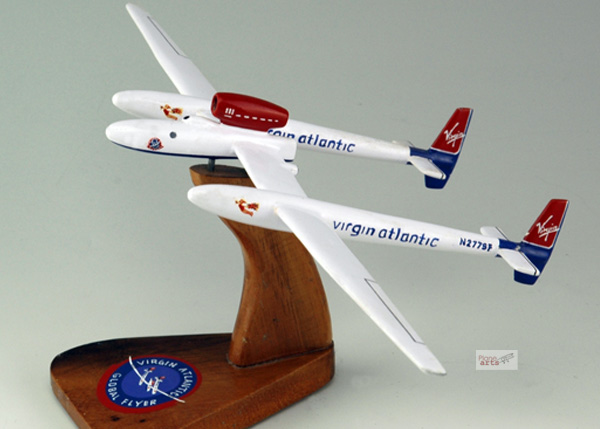
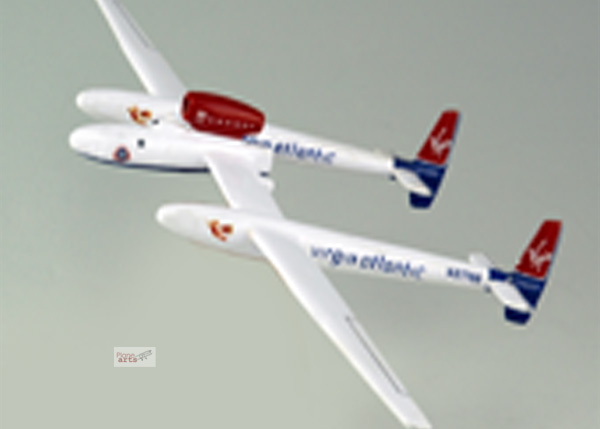
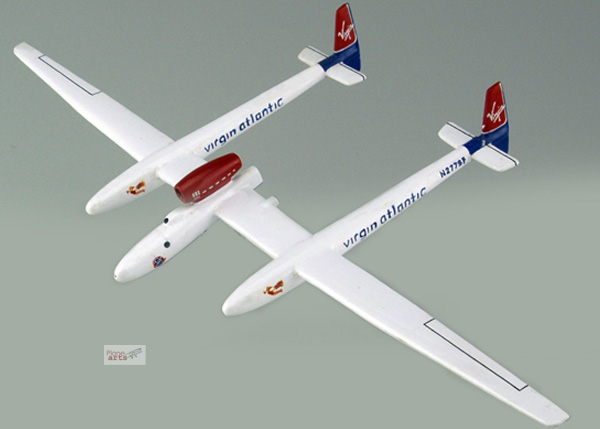



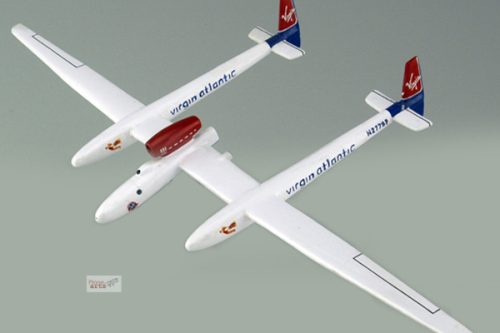
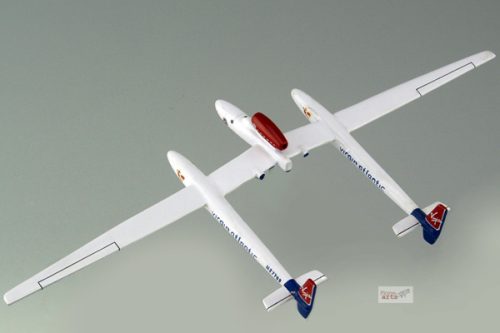
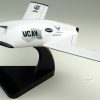
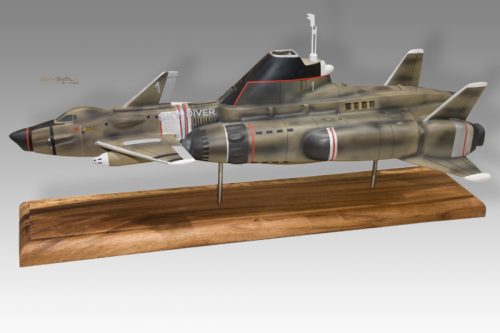
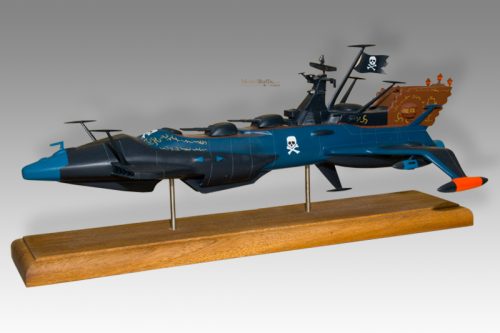
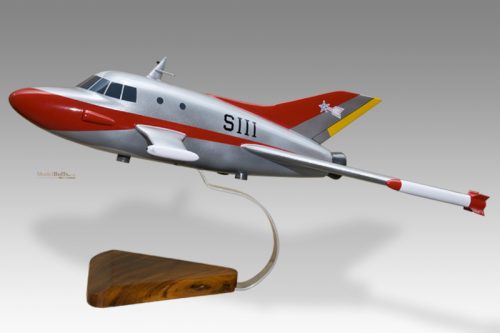


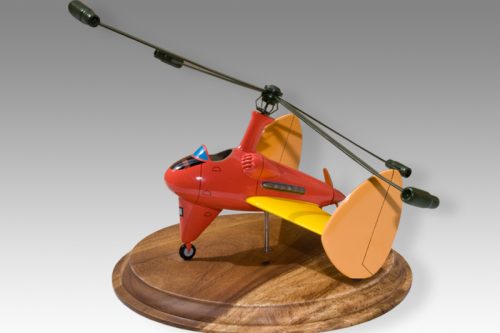
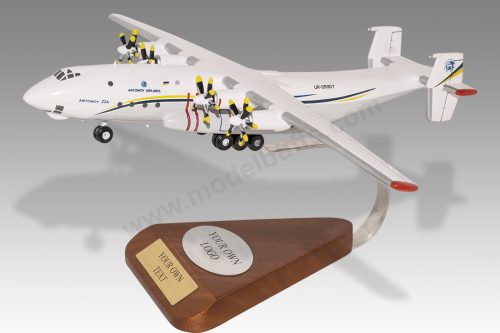

Reviews
There are no reviews yet.